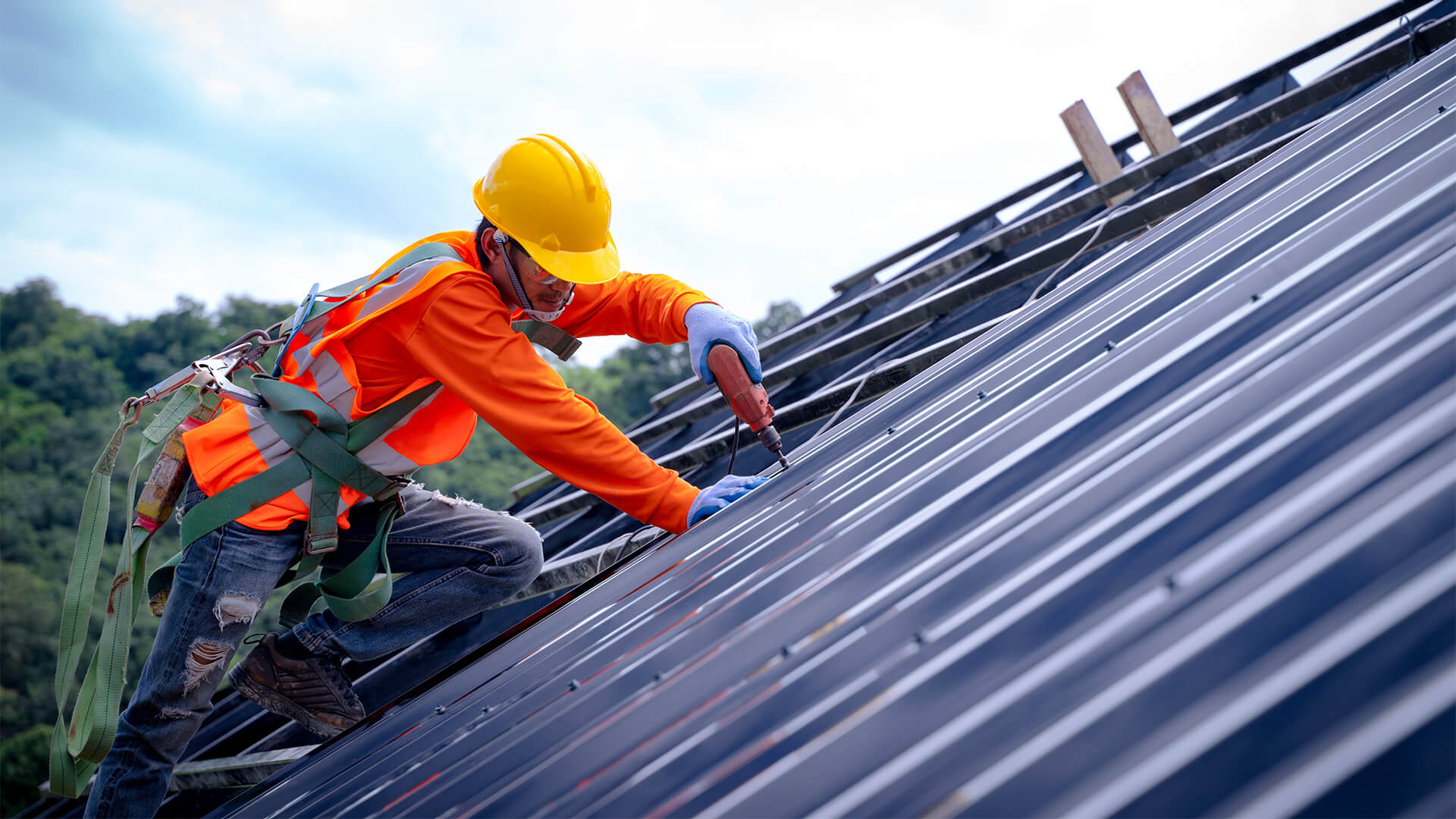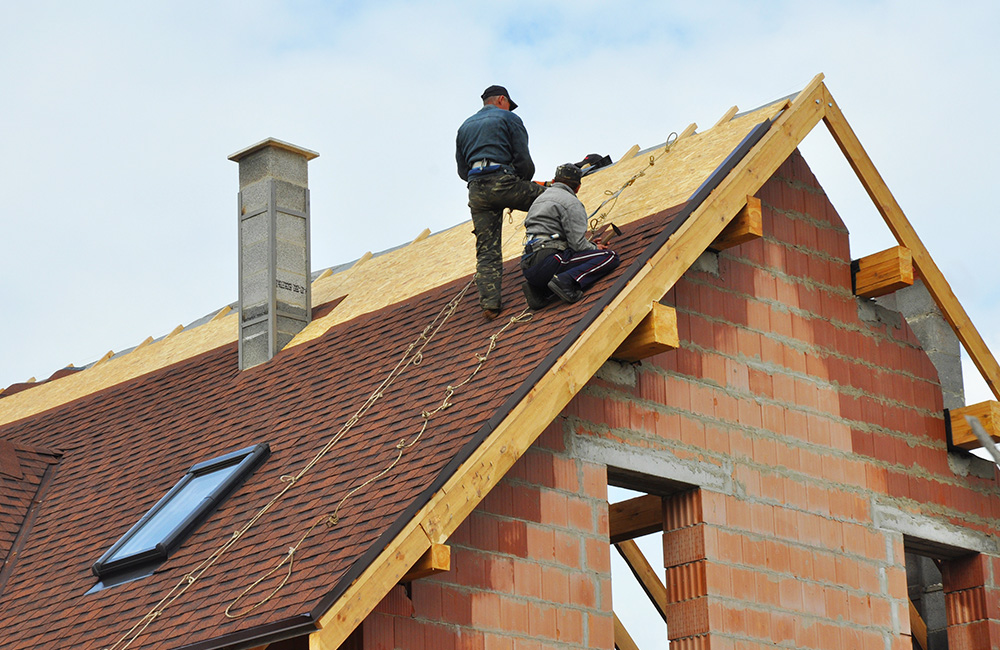Oahu Roofing: Comprehensive Roofing Services in the Oahu Location
Oahu Roofing: Comprehensive Roofing Services in the Oahu Location
Blog Article
Recognizing the Various Sorts Of Roofing Systems: A Comprehensive Guide for Homeowners
With a selection of alternatives-- varying from the typical gable to the contemporary flat-- each type offers distinct advantages and difficulties that should line up with the property owner's environmental considerations and specific demands. As we explore the intricacies of different roofing types, it comes to be apparent that one size does not fit all; the best option may stun you.
Gable Roof Coverings
Gable roof coverings, characterized by their triangular form, are amongst one of the most preferred roofing styles as a result of their simplicity and performance in dropping water and snow. This layout features two sloping sides that fulfill at a ridge, permitting efficient drainage and lessening the threat of water buildup. The high pitch typically associated with gable roofing systems enhances their capacity to manage hefty precipitation, making them appropriate for various environments.
Along with their practical advantages, saddleback roofs use visual adaptability. They can be adjusted to different building styles, from conventional to contemporary homes. The design can additionally accommodate additional functions such as dormer windows, which boost all-natural light and air flow in the attic space.
In addition, gable roofings offer ample area for insulation, adding to power effectiveness. Homeowners can select from a range of roof materials, consisting of asphalt shingles, steel, and ceramic tiles, better boosting personalization choices.
Despite their benefits, gable roofs might need extra assistance in areas vulnerable to high winds or hefty snowfall. Generally, the gable roofing system stays a favored selection because of its mix of capability, toughness, and aesthetic appeal.
Flat Roofs
Level roofs are often recognized for their minimal style and sensible applications, especially in industrial and commercial setups (oahu roofing). These roofs include a nearly straight or horizontal surface area, which allows for very easy building and flexible area use. While they might lack the visual allure of pitched roofings, level roof coverings use various benefits, especially in city settings where maximizing space is vital
One of the primary advantages of flat roofings is their availability. Home owners can use the roofing system space for numerous functions, such as rooftop gardens, terraces, or photovoltaic panel installments. Furthermore, flat roofing systems are normally extra cost-effective to mount and keep compared to their sloped counterparts, as they need less materials and labor.
Nonetheless, flat roofings do present particular difficulties. Proper drainage is vital to stop water pooling, which can bring about leakages and architectural damage. Therefore, choosing high-grade waterproofing materials and normal examinations are important for guaranteeing durability. Common products utilized for flat roofs include built-up roofing (BUR), changed bitumen, and single-ply membrane layers, each offering unique benefits. On the whole, level roofings function as a versatile and functional option for several house owners and businesses alike.
Hip Roof Coverings
Hip roofings are characterized by their sloped sides that merge on top, developing a ridge. This layout is distinct from saddleback roofs, as all four sides of a hip roofing incline downwards towards the walls, providing a more stable framework. The angle of the inclines can vary, enabling convenience in building visual appeals and functionality.
One of the key advantages of hip roof coverings is their capacity to endure hefty winds and adverse weather. The sloped surfaces enable far better water drainage, minimizing the risk of leakages and water damage. In addition, hip roofings provide increased attic space, which can be made use of for storage space or even exchanged comfortable areas.
However, building a hip roof covering can be much more costly and complicated than less complex roof covering types, such as gable roofing systems. The additional material and labor associated with creating the inclines and ensuring proper architectural stability can lead to higher expenses. Despite these drawbacks, lots of house owners favor hip roofing systems for their sturdiness, aesthetic appeal, and possibility for energy effectiveness.
Mansard Roofings
Mansard roofs, commonly identified by their unique four-sided style, attribute 2 slopes on each side, with the lower incline being steeper than the top. This building design, originating from France in the 17th century, is not only aesthetically appealing however functional, go as it takes full advantage of the functional room in the upper floors of a building. The high reduced incline permits even more clearance, making it an ideal selection for lofts or attics, which can be converted into living rooms.
Mansard roofing systems are characterized by their convenience, suiting various architectural designs, from conventional to modern. They can be built with different materials, consisting of asphalt roof shingles, slate, or metal, supplying homeowners with a series of options to fit their spending plans and choices. Additionally, the style allows for the integration of dormer windows, improving natural light and air flow in the top levels.
Nonetheless, it is important to think about the potential drawbacks. Mansard roofs may require more upkeep due to the complexity of their style, and their steep slopes can be challenging for snow and rain drainage. In general, mansard roof coverings integrate beauty with usefulness, making them a popular option among homeowners seeking unique architectural functions.
Shed Roofings
As homeowners increasingly seek simplicity and functionality in their architectural styles, shed roofs have emerged as a popular selection. Defined by a solitary sloping aircraft, a shed roofing presents a minimal aesthetic that matches different home styles, from contemporary to rustic.
Among the main advantages of a shed roof covering is its straightforward construction, which typically translates to lower labor and material expenses. This style enables for reliable water drainage, decreasing the danger of leaks and water damages. Furthermore, the vertical slope gives sufficient room for skylights, enhancing natural light within the interior.
Shed roofs additionally use convenience in terms of usage. They can be efficiently incorporated into enhancements, garages, or exterior structures like sheds and structures. Furthermore, this roofing design can accommodate different roof covering products, consisting of steel, asphalt tiles, discover this or even environment-friendly roofings, aligning with green initiatives.
However, it is vital to consider regional environment problems, as hefty snow loads might require adjustments to the roofing's angle or framework. Overall, dropped roofings provide a sensible and cosmetically pleasing option for property owners aiming to make the most of performance without compromising design.
Conclusion


Gable roofs, characterized by their triangular shape, are amongst the most popular roofing designs due to their simplicity and performance in losing water and snow. oahu roofing. The high pitch commonly associated with gable roofings improves their capacity to handle heavy precipitation, making them appropriate for various climates
While they might lack the aesthetic allure of pitched roofs, level roofs offer various benefits, especially in urban settings where making best use of space is critical.

Report this page